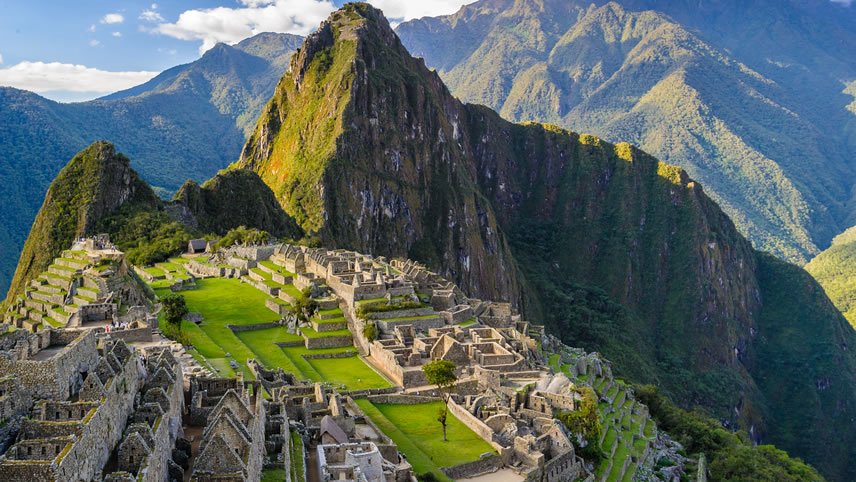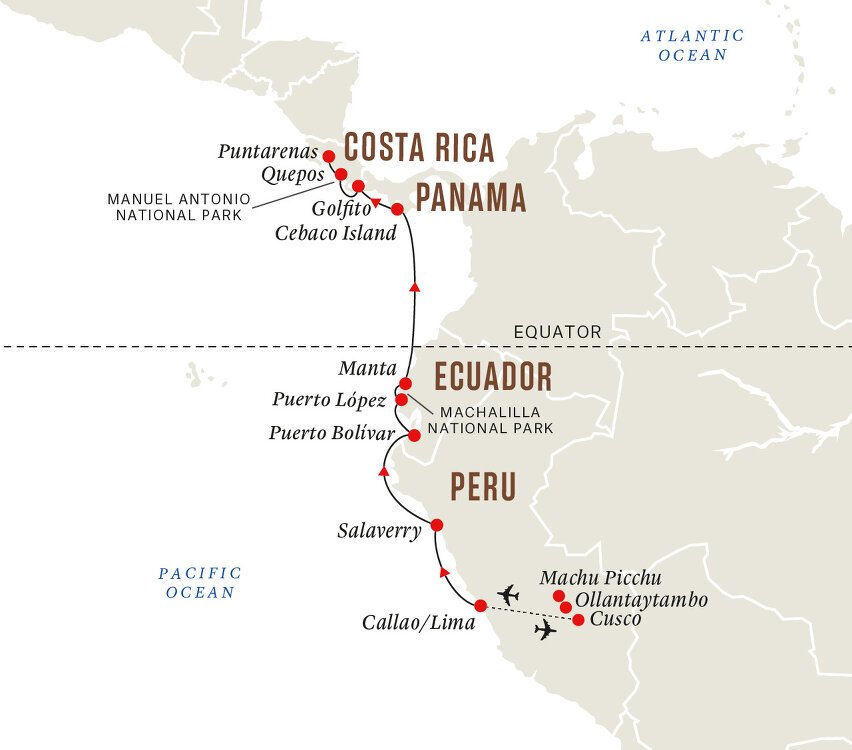Overview
Itinerary
Set on a strip of desert between the Pacific Ocean and the Andes Mountains is the Peruvian capital city of Lima. It is the largest city in the country, a modern, sprawling metropolis where traditions and trends converge in an exciting cocktail of culture and cuisine. It's for good reason that its original name was La Ciudad de los Reyes, or ‘The City of Kings'. Your adventure begins here with a night at a central hotel, but you could also arrange to come a few days early to explore the capital more.
The UNESCO World Heritage historic centre is full of colonial-era architecture like Plaza Mayor and San Francisco Monastery. On the other hand, the clay ruins of ceremonial pyramids Huaca Pucllana and Huaca Huallamarca are reminders of long-lost Inca civilisation. For more pre-Columbian archaeology, there are at least four separate museums to pick from. Arty types among you will also enjoy the bright and Bohemian area of Barranco, complete with murals, creative cafés and two of Lima's contemporary art museums.
But the ultimate Lima experience has got to be the food. Cuisine emanating from the capital has raised the bar the globe over and there is no shortage of internationally recognised and award-winning restaurants for you to delight in. One of Peru's all-time gastronomic greats is ceviche, fresh fish marinated in tangy lime juice and other seasonings. The staple dish can be savoured in many locations around the city, from up-market diners in Miraflores to salt-of-the-earth cevicherías at the fishing docks over in Chorrillos.
In the morning, you'll hop on a flight from Lima to Cusco, the former capital of the Inca empire whose name means ‘Navel of the World'. It is thought the city's original layout in the middle of the highland Huatanay River valley was in the form of a puma. If the heart of the puma is Plaza de Armas, the site of colonial architecture, colourful carnivals and festive street parades, the head of the puma is Sacsayhuamán, a fortress and temple complex that overlooks Cusco from atop a hill. Its name means ‘Royal Eagle', a reference to the mythical bird that was believed to guard the empire. You'll enjoy a visit to the ruins here 3,700 metres above sea level and with great views over the city and the Inca-sacred summits of Ausangate, Pachatusán and Cinca. Take your time to stroll the fortress' open esplanade, passing among the remains of residences, shrines, towers, tunnels, zigzagged limestone walls and distinct trapezoidal doorways.
It's thought that construction of the site took more than seven decades and required the labour of 20,000 men to set the foundations, hew the stone, transport materials and complete the stonework. As you walk around, you might notice that the walls and buildings are made entirely without mortar. The fact that the enormous stones fit together so perfectly that not even a single blade of grass can fit between them is a testament to the Inca's sophisticated masonry. When it's time for lunch, we'll eat at a local restaurant.
In the afternoon, we continue to Tambo del Inka Resort in the Sacred Valley, a perfect place to end the day with dinner and a good night's sleep.
After breakfast at the resort, you're in for an unforgettable day. We start off in Ollantaytambo, once the royal estate of Emperor Pachacuti who conquered the region and built the town that shares its name with the formidable stone fortress that clings to a massive cliff above the community. Constructed of rose-coloured granite, this huge structure was once a thriving complex of baths, temples and military barracks, and the fortification was the valley's main defence against the rival Antis people. It was also the site of the Inca's greatest victory against the Spanish during the wars of conquest.
We then head to the nearby train station to board the deluxe Hiram Bingham train to Machu Picchu. Tuck into a savoury brunch while enjoying the views on the way to the renowned location.
At last, we arrive at spectacular Machu Picchu. Built around 1450 and abandoned at the time of the Spanish conquest, thick tangles of vines and trees shielded it from the outside world for centuries. Since being 'found' by an American archaeologist in 1911, 'The Lost City of the Incas' has now taken centre stage as one of the greatest destinations in the world.
You can explore the city's ruins, imagining what life must have been like when it was inhabited by priests, craftsmen and servants. Excavations at the site have revealed skeletons, artefacts and woollen clothing, and you can admire the famous precision of Incan stonework on display here. Still, as the Incas left no written records behind about the city's rise or fall, Machu Picchu remains one of the most archaeologically mysterious sites in the world.
After spending an eventful day at the two sites, we head back to Tambo del Inka Resort by train for another relaxing evening and overnight stay.
After breakfast, we head to the splendid Baroque-style Cusco Cathedral, built by the Spaniards in the mid-1500s on the foundations of an Incan palace. Many of the stones used in its construction were looted from the nearby Sacsayhuamán fortress. From there, we continue to Koricancha where you can admire the lovely Dominican Convent of Santo Domingo that was built on the foundations of the Temple of the Sun, the most important temple in the Inca Empire. The curved, mortar-less masonry wall at the west end of the church is considered to be one of the greatest existing examples of Inca stonework.
We transfer to the airport and fly to Lima. Once there, we head to Callao where your ship is docked, ready and waiting to begin the next part of your expedition. Once on board, you'll check-in, run through an important safety drill and have time to settle into your cabin and look around the ship. Later, meet the Captain, crew and your Expedition Team at the welcome dinner and raise a glass to toast to the adventures ahead. The day ends with a health and safety briefing from the Expedition Team, and maybe a few more drinks in the Explorer Lounge and Bar!
Buffeted by the wind and waves of the Pacific, Salaverry can be a hard port to access. If all goes to plan though, it will be a good transit point to explore Trujillo, Peru's third largest city, as well as an array of archaeological sites scattered throughout the surrounding region.
Trujillo sits in a fertile valley oasis irrigated by the Moche River. It boasts a colourful baroque 17th century cathedral, 10 colonial churches, and many neoclassical mansions, not to mention one of the longest mosaic murals in the world at the local university. However, it is more than likely that your focus will be elsewhere and on things not so modern.
The city of Chan Chan was raised by the Chimu Empire which appeared in the region around 900 AD. The vast ruins of the 20-square kilometre complex include the Tschudi temple-citadel and Huaca Esmeralda. On the other side of Trujillo are the Mochican pyramids of the Sun and the Moon which pre-date Chan Chan by a few hundred years. Huaca del Sol in particular is the largest adobe structure on the continent while Huaca del Luna is more detailed with many of its pastel frescos still visible.
As we leave Peru behind and set sail for Ecuador, enjoy another day at your leisure aboard the ship. Take advantage of the many onboard facilities or join in on lectures as we prepare you for what's still to come.
To fully relax during your downtime on board, there's no better place than the Wellness Center. Feel the knots in your muscles disappear during a massage or pamper yourself with a few skin-scrubbing treatments. And if the warm weather hasn't opened up your pores, a session in the sauna is bound to do the trick. You could also slip into your bathing suit and lie back into the bubbles of the outdoor hot tubs or bask in a state of zen during a guided meditation class. Whatever you decide to do, you're sure to be stress-free and revitalised for the remaining adventure.
Machala's main claim to fame is Puerto Bolivar, an important Ecuadorian port for the export of coffee, cocoa, shrimp and bountiful bananas which the locals call oro verde – ‘green gold'. As part of a choice of optional excursions, you can visit a local banana plantation and also try and spot hummingbirds, parakeets and howler monkeys in Buenaventura Nature Reserve to the south. Puyango Petrified Forest is nearby with one of the largest collections of fossilised trees in the world, thought to be about 100 million years-old, as old as the Andes Mountains themselves.
At Puerto Bolivar, you can feast on fresh seafood at one of the many harbour restaurants and enjoy views of the natural mangrove swamps of Isla Jambeli opposite. Machala itself has all the charm you'd expect from a small coastal city, including friendly locals, cute plazas and unusual monuments dedicated to sort-fish and bananeros. The restaurants are evolving and beginning to dabble in the hip modern cuisine which Ecuador and Peru are increasingly known for.
Named after the Machalilla culture, that thrived in the region during the second millennium BCE, Machalilla National Park is one of the most extensive protected areas on the Ecuadorian coast. Created in 1979, the National Park comprises a continental section covered in dry forest and some picturesque islands, including Isla de la Plata. Home to a rich and divers wildlife that includes more than 270 species and birds and 81 of mammals, Machalilla has also been declared an internationally important wetland under the Ramsar Convention, recognising its great ecological importance. Archaeology is the other highlight of Machalilla, and the park is considered an outdoor museum of pre-Columbian history, with such important sites as Agua Blanca.
The Headquarters of the National Park are in Puerto López, a fishing village of about 10.000 souls located in the southern coast of Manabí province. Founded by local fishermen in 1810, Puerto López is actually a bay open to the Pacific Ocean, with no conventional port facilities. If weather conditions allow, we aim to anchor off the long sandy beach and use our small expedition boats to land. Once ashore, you'll enjoy an included excursion to the National Park with time to visit the Agua Blanca archaeological site and explore the tropical dry forests of Machalilla.
Manta is a busy and prosperous port city with high-rise buildings, resort hotels, and a couple of casinos. It is well known in the world of water sports for its long stretches of beach that are blessed with the kind of wind and waves that draw surfers, body-boarders and kitesurfers from across the globe. Casual beachgoers normally hang around the shops, restaurants and bars of Malencón Escénico at Playa el Murcielago. You can also head to San Lorenzo for surfer-sweet swells or to Playa Bonita at Santa Marianita to watch kitesurfers take off into sea and sky.
Aside from tourism, the city thrives on an industry of tuna fishing and canning, and typically for a coastal city, seafood is the speciality of many restaurants in the area. Expect wild-caught succulent shrimp, black clams, octopus, red snappers and so on. You should make a point to try a bowl of the local encebollado broth made with the fresh tuna Manta is so proud of. The Museo Municipal Etnografico Cancebi showcases Ecuadorian art and artefacts from local pre-Colombian civilisation, including ancient fishing tools. You might also like to visit the nearby handicraft town of Montecristi where traditional Panamanian straw hats were first created and still hand woven to this day.
A day at sea means you can attend interesting lectures, learn basic expedition photography, attend an art workshop, and enjoy the fresh sea air out on deck as you scout for wildlife. You can also use microscopes in the Science Center to analyse samples taken during the cruise. As we cross the Equator, it's the tradition of Norwegian sailors to hold a ceremony to seek King Neptune's blessing. If we're in luck, he may even make an appearance.
By this stage of your journey, you'll have made friends with your fellow explorers, finding that you have much in common in terms of your interests and passion for nature. You can spend time chatting with them over a snack at the bistro-like Fredheim, perhaps recalling the best bits of your expedition so far. The Explorer Bar is also open for drinks and you might catch the crew and Expedition Team here in the evening for some friendly banter. As night falls, there are also few things as romantic as stargazing out on deck with your loved one.
Even as Panama's third-biggest island, much of Cebaco is uninhabited, aside from the small village of El Jobo in the north. The only access to Cebaco is by sea but there are no public ferries that come here. The result of this remoteness is quiet, traditional island-life all but forgotten by mass tourism and untainted by development.
Miles of beautiful pristine beaches lie hidden around each bend, such as Playa Grande to the south which has fine white sand and rows of coconut trees. There are various hiking trails that weave through the lush rainforest, ideal for taking a moment to enjoy the island's peacefulness and to look for wildlife. The Gulf of Montijo where the island lies is part of a nationally protected marine zone and the luscious turquoise waters at La Pita beach and Caelata Cayman promise exceptional coral reefs and colourful fish to see while snorkelling.
The relaxed town of Golfito sits sheltered in the blissfully beautiful Golfito Bay, which in turn lies within the larger Golfo Dulce. You can enjoy the views from seaside marinas or better yet, take the scenic hiking trails that go up into the wildlife refuge on the hill and beyond to Piedras Blancas National Park. As you explore the lush rainforest, you'll come across pretty waterfalls and possibly spy toucans, macaws, the blue morpho butterfly, anteaters, sloths, mantled howler monkeys and more. The calm waters around the bay also make it ideal to tour the local mangroves and visit isolated beaches via kayak as part of an optional excursion.
Once a prime region for banana exports, Golfito has since switched its economy to palm oil plantations and sport fishing. Anglers of all ages stay at boutique resorts and chic eco-lodges around Golfito, going out on the many boats during the day in the hopes of catching an iconic Pacific Sailfish. If you're looking for a bargain, you could check out the town's duty-free centre that regularly draws both visitors and locals alike on shopping sprees.
You'll find that the town of Quepos and its surroundings come packed with plenty of things to see and do. The many boats in the pretty Marina Pez Vela cater for big game sport fishing that Quepos is synonymous with. Around the central plaza are six blocks of restaurants, galleries and shops and there is a choice of water sports on the mile-long Playa Espadilla.
The big attraction of Quepos though is its proximity to Manuel Antonio National Park. This is one of the most popular national parks in Costa Rica and ranks in the Forbes list of top 12 most beautiful national parks in the world. The park boasts impressive views of mountains, mangroves, lagoons, beaches, and tropical forest. With 350 species of birds and 109 species of mammals, it is often described as an ‘outdoor zoo' by visitors. Following the breathtaking Perezoso trail, you can hope to spot scarlet macaws, toucans, hawks, four species of monkey, sloths, iguanas and armadillos.
Your expedition will sadly end in Puntarenas, a city on a needle-like strip of land on the Pacific coast of Costa Rica. City slickers from San José normally nip to Puntarenas for the day to get their fix of relaxed coastal life and fresh ocean air. While it is still an active fishing port, Puntarenas mainly acts as a transit point for people on their way elsewhere in the region, such as to the white-sand beaches of Nicoya Peninsula or the waterfall-rich Tortuga Island.
Depending on the time you have after disembarkation, before your return flight or post-programme, the palm-tree lined Paseo de los Turistas makes for a pleasant stroll. There are restaurants, food stalls and vendors for any last-minute souvenir shopping. If there is time to indulge your sweet tooth, we recommend batidos fruit smoothies and also churchills, the official snack of Puntarenas which is a combination of fruit, shaved ice, syrup, and ice cream. If you're wondering about the name, it comes from the fact that the local inventor of the sweet concoction was thought to be the spitting image of the famous British Prime Minister.
Before returning home, why not make the most of your trip and add a Post-Programme to the magnificent Arenal Volcano Area where you'll join activities to see more of Costa Rica's beautiful flora and fauna. Or join a jungle boat tour with lunch followed by a night in the capital city of San José.
Life Onboard MS Roald Amundsen

Hybrid powered, a warm and informal atmosphere, premium comfort, and state of the art technology. Read more

Passionate. Knowledgeable. Specialists in their field. Your dedicated Expedition Team bring each destination to life. Read more
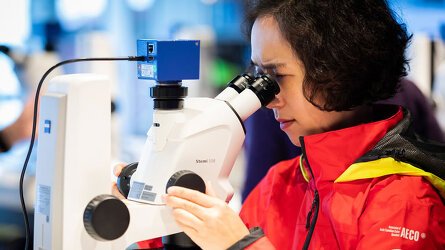
A dedicated space to enjoy fascinating lectures from the specialist team and get hands on with interactive fun. Read more
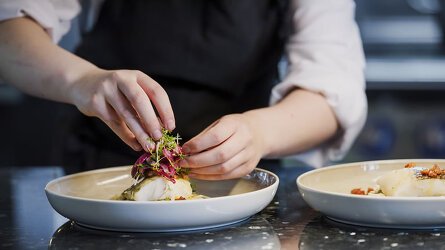
Three onboard restaurants serve up delicious international dishes, local cuisine, and traditional Norwegian favourites. Read more
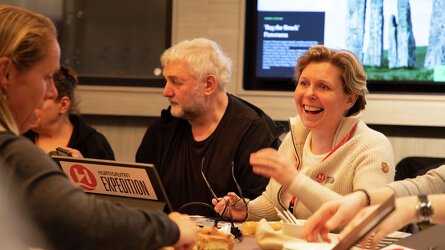
A Hurtigruten cruise goes hand in hand with the notion of 'hygge', a sense of cosiness, conviviality, comfort and contentment. Read more

Take in the scenery from the comfort of your cabin, the pool, outdoor hot tubs, sauna, or light-filled public spaces. Read more

Availability Click on prices below to view cabin upgrades and details
Tour & cruises prices are per person. Prices shown have savings applied, are subject to availability and may be withdrawn at any time without notice. Prices and trip information are correct at the time at this point in time, however are subject to confirmation at the time of booking and are subject to change by Hurtigruten. For cruise itineraries, cabin images are sourced from Hurtigruten. These should be treated as indicative only. Cabin inclusions, upholsteries and room layout may differ to the image(s) shown depending on the ship selected and your sailing dates.
Similar Cruises
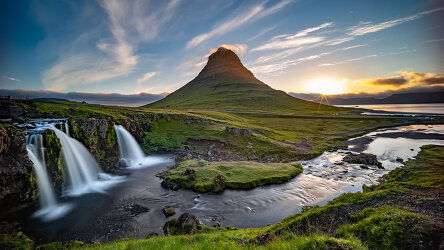
15 Days Reykjavik Hamburg
Operated By: Hurtigruten
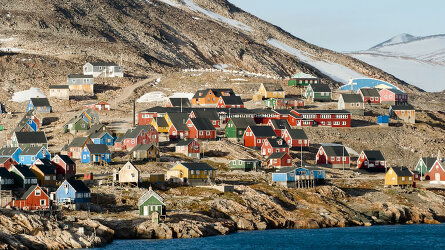
15 Days Reykjavik Reykjavik
Operated By: Hurtigruten
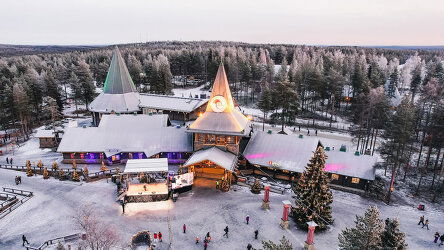
15 Days Stockholm Bergen
Operated By: Hurtigruten

15 Days Colon Valparaiso
Operated By: Hurtigruten
